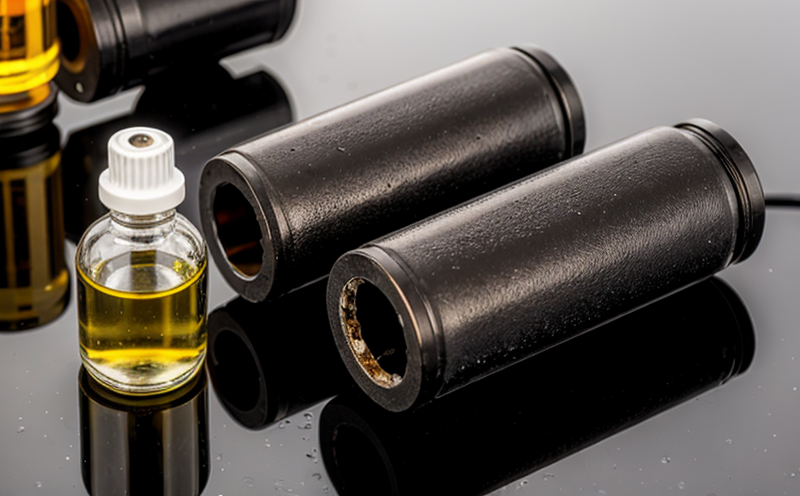APHA 5520D Oil and Grease Infrared Test in Water
The APHA (American Public Health Association) Method 5520D is a well-established technique for determining the concentration of oil and grease in water samples. This method utilizes infrared spectroscopy to identify and quantify the hydrocarbon content, which includes both petroleum hydrocarbons and other organic compounds present as oil or grease.
This testing protocol is particularly important in sectors such as environmental monitoring, wastewater treatment facilities, and industrial processes where contamination by hydrocarbons can significantly impact water quality. The APHA 5520D test provides a reliable measure of the total suspended solids (TSS) and dissolved organic carbon (DOC) that contribute to oil and grease levels.
The methodology is applicable in various contexts including:
- Water quality assessment
- Municipal wastewater treatment plant monitoring
- Industrial discharge control
- Agricultural runoff analysis
- Oil spill detection and cleanup efforts
The test involves the following steps:
- Sampling of the water sample ensuring proper preservation to prevent hydrocarbon degradation.
- Precipitation and filtration of particulate matter from the sample.
- Dissolution of the precipitated solids in a suitable solvent.
- Analysis using an infrared spectrophotometer calibrated for the specific hydrocarbons being tested.
The results provide quantifiable data on the concentration of oil and grease, expressed typically as milligrams per liter (mg/L). This information is crucial for compliance with regulatory standards such as those set by the Environmental Protection Agency (EPA) in the United States or equivalent bodies internationally.
Accurate and precise measurement of oil and grease content is essential for effective management of water quality. It helps industries to identify sources of contamination, implement corrective measures, and ensure that effluent discharge limits are met. In wastewater treatment plants, it enables operators to monitor the effectiveness of their processes in removing contaminants.
The APHA 5520D test is a critical tool for ensuring compliance with environmental regulations and for protecting public health by monitoring water quality. The method's precision and reliability make it an indispensable part of any comprehensive water testing program.
Applied Standards
| Standard Number | Description |
|---|---|
| APHA 5520D | Determination of Oil and Grease by Infrared Spectrophotometry in Water Samples. |
Benefits
- Precise quantification of oil and grease concentrations in water samples.
- Compliance with regulatory requirements for water quality standards.
- Identification of sources of contamination in industrial processes and wastewater systems.
- Supports effective management strategies to improve water quality.
- Aids in the assessment of environmental impact from spills or discharges.
- Provides data for process optimization in treatment facilities.
Eurolab Advantages
At Eurolab, our expertise in APHA 5520D testing ensures that we provide accurate and reliable results. Our state-of-the-art laboratory equipment, combined with highly trained personnel, guarantees consistent quality across all tests.
We offer:
- Fast turnaround times for critical test results.
- Comprehensive reporting tailored to the specific needs of our clients.
- Training and support services for those who need additional assistance in understanding or implementing the APHA 5520D method.
- Confidentiality and security measures ensuring that sensitive data is protected at all times.
Our commitment to excellence means that you can trust Eurolab with your water testing needs, knowing that we will deliver accurate, reliable results every time.





